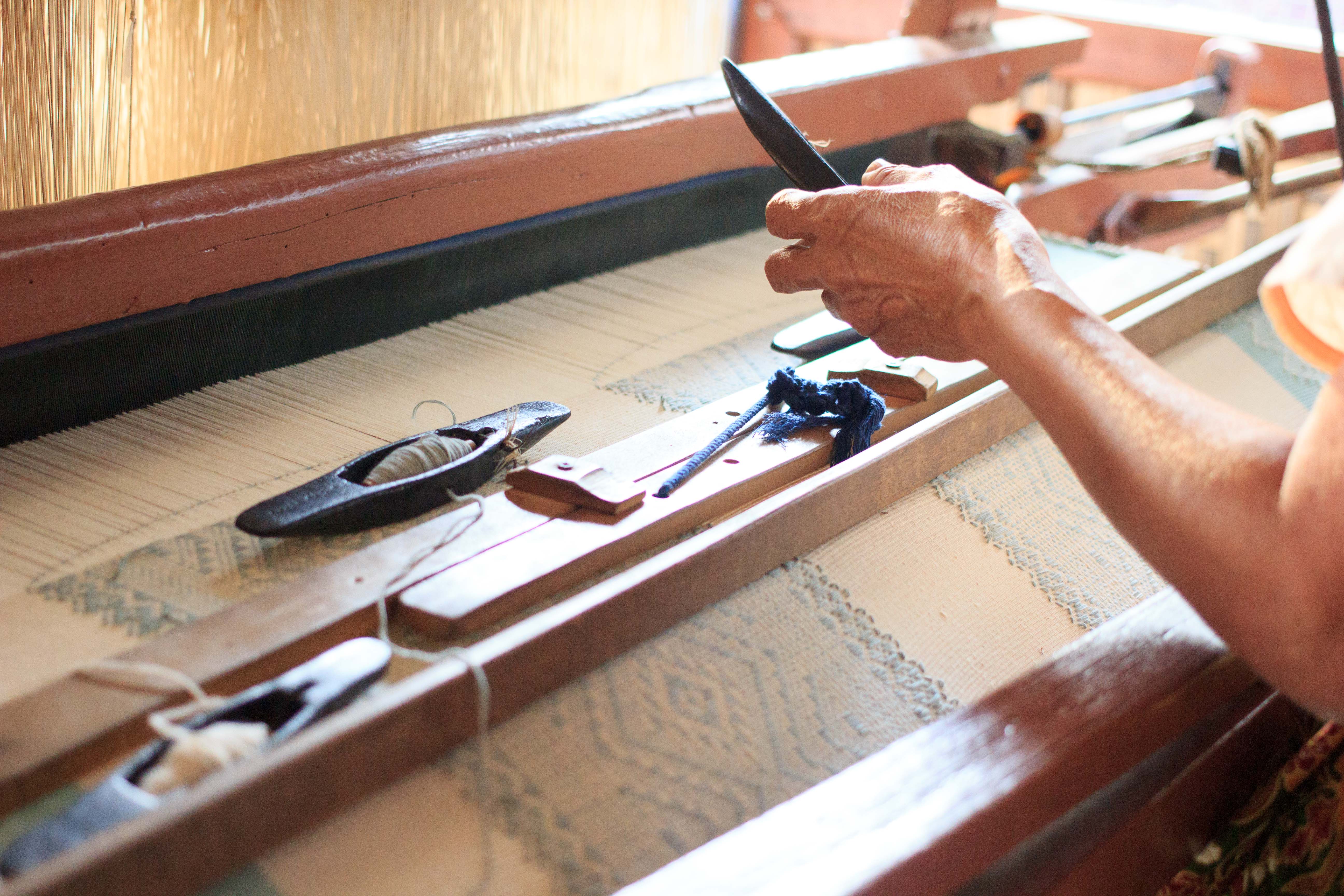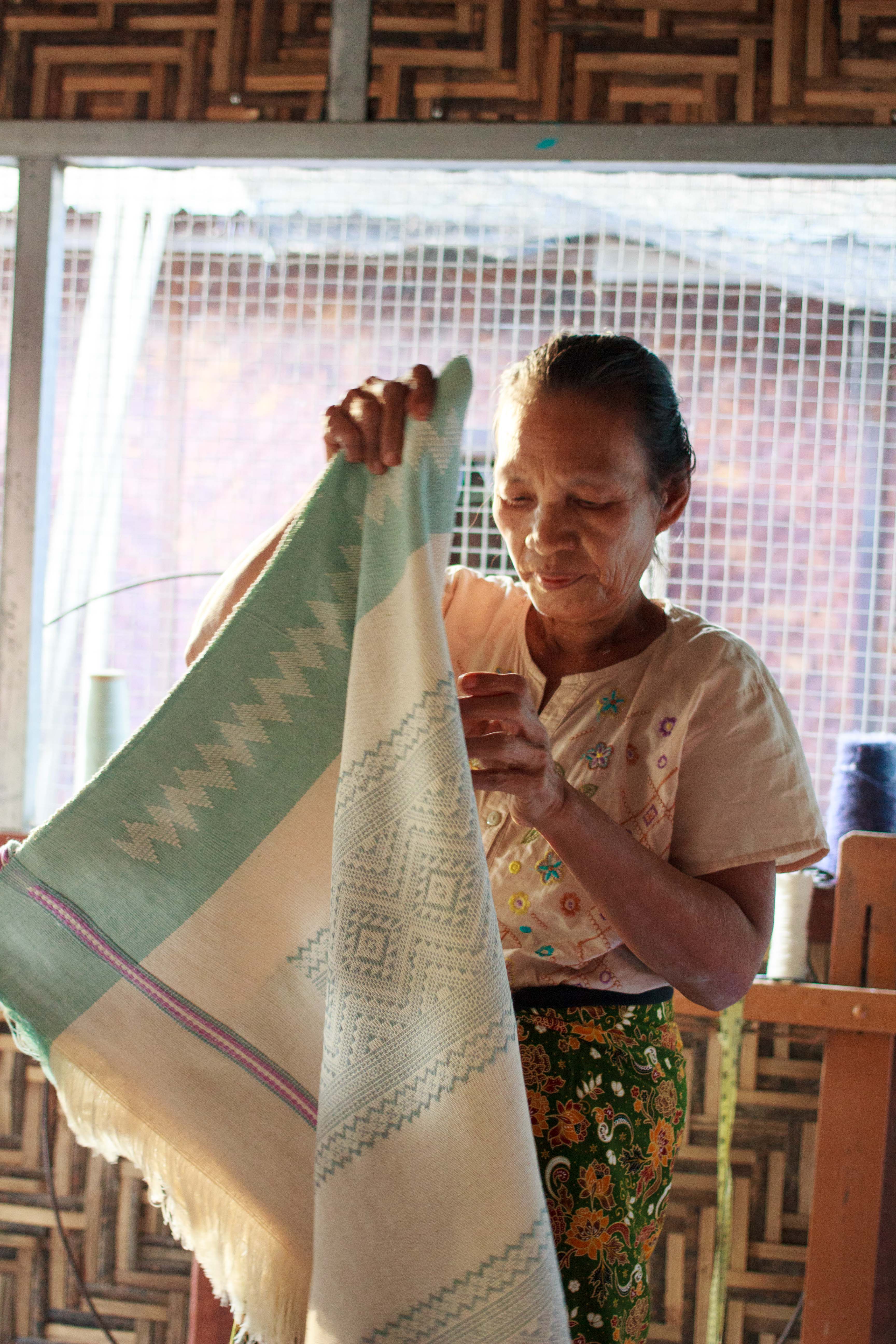Weaving
A word with Ma Wai – The manager
Ma Wai has been working with Nandar since the start of the workshop, which is 14 years ago. She learned the skills of hand-weaving from her mother and also has two looms at her home.
The most enjoyable part of her work she finds is the weaving itself. It is an interesting business and very satisfying work. The biggest frustration comes with technical errors when setting up the looms or the weaving, as it takes a lot of time to correct them.
She explains the working day starts at 8.00 am and ends at 5.00 pm. However, the working hours are quite flexible. Also, if the design you are working is complicated, you get paid a higher rate. Ma Wai has a family of four children, three boys and a girl. When asked what she wished for her kids, the answer is simple, a good education. Just like most women in the workshop, she wants her children to have the freedom and possibility to study and find a decent job that they enjoy.
From her perspective, a good way to reinvest the profits is in the education of the children of the families who work at the workshop.
Khin Si Thu has worked at the workshop for 11 months. She is 26 years old and comes from Southern Shan state.
After receiving her certificate from the Saunders Institute, she joined Nandars workshop. She is studying at the University of distance education (this is part-time schooling where students have classes in the evening or weekends). During the day she weaves at the workshop, and in the evening she goes to school nearby.
The girls who come from far away live above the workshop. This is common in Myanmar. Staff often live at the places where they work when they come from remote areas.
Khin Si Thu learned to weave in her hometown. At home, they have several looms. Her dream for the future is to open her own business in her home town. She would like to focus on making designs with traditional Shan fabrics, which are bright and colourful.
A word with Khin Si Thu – Handweaver
The process of handweaving designs takes years of experience. The looms at the workshop are made out of wood and bamboo and besides keeping focus, it is also physical work.
For the handweaving, both handspun and machine-spun yarn and thread are used. After the spinning process, the designs for the fabric are set up on the handloom. This takes great precision and knowledge. It is a time-consuming task, which can take up to five days, with no room for errors.
The handweavers use handspun cotton for the weft and machine-spun cotton for the warp to make the fabrics. These get attached by passing the weft yarn through the warp threads with a boat-shaped shuttle.







